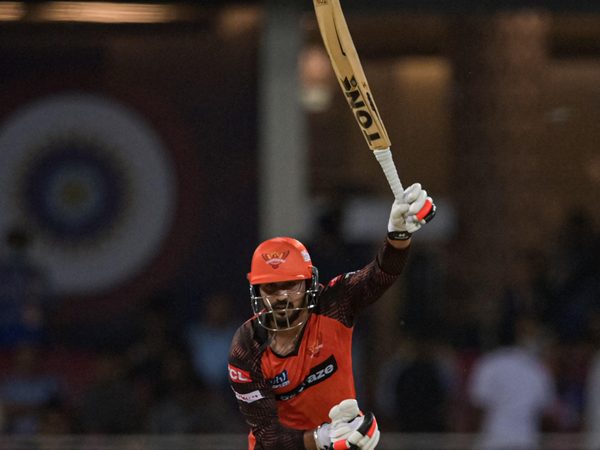
Naman Agarwal makes a deep dive into the numbers to examine the presence (or absence) of bias in pitch ratings for Test matches around the world.
Subscribe to the Wisden Cricket YouTube channel for post-match analysis, player interviews, and much more.
When conversations regarding the impact of a pitch on the already dull-looking future of Test cricket start happening by lunch on day one, more often than not it means the match won’t last long. South Africa were all out by lunch on the first day of the Newlands Test against India. The match lasted all of 642 balls: individual innings have lasted longer than that in Test cricket.
Quickly, the conversation turned from seam to spin. India captain Rohit Sharma said that people “should keep their mouth shut” when they encounter extreme pitches in India. A current Indian opener asked “what if 20 wickets fell on day one in India?”. An Indian legend predicted English whingeing before the team had even touched down in the country.
The general sentiment was that the pitch for the Cape Town Test match didn’t receive nearly as much criticism as a turning surface would have, had it produced a similarly short game.
The Newlands pitch received an ‘Unsatisfactory’ rating and a demerit point from the match referee. The only worse rating it could have received was ‘Unfit’, which is given out for pitches that are physically dangerous for players. Some thought it deserved that, although despite the extra bounce and seam movement that the Newlands surface offered, no injuries were suffered.
New pitch rating system vs the old
Before we start, here is a word about the changed ratings systems. The ICC’s Pitch and Outfield Monitoring Process guidelines, according to which match referees rate pitches, underwent a revision in November 2023, reducing the total number of categories for pitch ratings from six to four.
[breakout id=”0″][/breakout]
‘Very Good’ and ‘Unfit’ remained at the extreme ends of the spectrum; ‘Good’ and ‘Average’ were merged to create ‘Satisfactory’; ‘Below Average’ and ‘Poor’ became ‘Unsatisfactory’.
All that made it difficult to gauge whether the Newlands surface would have been rated ‘Below Average’ or ‘Poor’ had the old rating system been in place.
How are pitches rated?
The ICC guidelines clearly mark out the conditions for rating pitches as well as provide a general overview that Test match pitches should lean, if at all, slightly towards the bowling side: “The objective of a Test pitch shall be to allow all the individual skills of the game to be demonstrated by the players at various stages of the match. If anything, the balance of the contest between bat and ball in a Test match should slightly favour the bowling team.”
Any deviation towards the extreme – be it in favour of the bowling side or the batting, is penalised with pitches getting rated ‘Average’, ‘Below Average’, ‘Poor’, or ‘Unfit’ (‘Satisfactory’, ‘Unsatisfactory’, or ‘Unfit’ in the new rating system).
While it’s impossible to quantify how the amount of seam movement, turn, bounce, and carry fluctuated through a Test match without ball-tracking data, we can look at the rate at which wickets fell to give a fair idea of how a pitch played. Extremely low bowling strike rates would indicate a bowler-friendly surface, while very high ones would signal that the pitch was a batting paradise.
Since July 24, 2019, a total of 171 Test matches have been played. The lowest strike rate among these, a wicket every 20 balls, took place during the Cape Town Test between India and South Africa. On the other extreme was the Rawalpindi Test between Pakistan and Australia in 2022, where a wicket fell every 175 balls.
Cape Town received a rating of ‘Unsatisfactory’ under the new guidelines, while the Rawalpindi received ‘Below Average’ under the old.
Is there a bias in the way pitches are rated in the subcontinent?
The Test matches with the top (highest) and bottom (lowest) 20 percent of bowling strike rates should give us a decent set where conditions were extreme (or close to extreme) in favour of the batting and bowling side respectively. Looking at the ratings the pitches for these Tests received should then allow us to find any patterns, if they exist.
Here is how the pitches for these Tests with extreme bowling strike rates were rated.
[20 percent of 171 = 34. Therefore, Tests with the 34 highest and the 34 lowest bowling strike rates are considered.]
Most of these 68 Tests were played in India (11). Australia hosted eight of these Tests. England, New Zealand, and West Indies seven each. Bangladesh, Pakistan, and South Africa six each, Zimbabwe five, Sri Lanka three, and the UAE two.
Going by ICC's guidelines for rating pitches that expects even contests between bat and ball, and by the assumption that bowling strike rates would roughly indicate how a pitch played, one would expect pitches for most of these 68 Tests to have received relatively poor ratings.
However, only 30 of them received 'Average' or worse ratings. Of the 68 Test matches, 38 received ratings of either 'Good' or 'Very Good'. In an ideal situation, these 38 Tests should be evenly spread around the world. A high concentration of these seemingly counter-intuitively rated pitches in one part of the world would indicate the existence of some sort of bias.
Here is how these 38 pitches were distributed across countries.
The UAE hosted two games where bowling strike rates were in the extremes, but pitches for both games escaped an 'Average' or worse rating.
Surprisingly, pitches for six out of the seven Test matches in New Zealand that had bowling strike rates in the top or bottom 20 per cent were given ratings of 'Good' or 'Very Good'. Two-thirds of such Tests in South Africa received above average ratings as well.
Grouping the above numbers into SENA and subcontinent countries gives the following results.
Nearly one-third more pitches in SENA countries received 'Good' or 'Very Good' ratings despite producing Test matches where wicket-taking was either very easy or very tough compared to pitches in the subcontinent.
On the other hand, pitches for 19 of the remaining 103 Test matches whose bowling strike rates fall in the moderate range (between 20 and 80 percent of all bowling strike rates for Test matches in this period), indicating an even contest between bat and ball, were rated 'Average' or worse.
A similar country-wise distribution of these 19 seemingly counterintuitive ratings throws the following results.
India are tied with South Africa for the highest percentage of counterintuitive ratings (if you ignore Zimbabwe's one Test match). Of the pitches in Sri Lanka or New Zealand that produced even contests between bat and ball, none were given poor ratings. Australia and England are also low down on the list. Grouping this distribution into SENA and subcontinent countries gives these results.
Unlike the large difference in the case of Test matches with extreme bowling strike rates, the difference in the percentage of counter-intuitive pitch ratings for Test matches with moderate bowling strike rates between SENA and subcontinental countries is not that high, although the scale is still tilted against the latter to an extent.
Inference
The rating of pitches, much like the making of pitches, is not an exact science that can be done solely based on numbers – at least at this point. A good pitch with unevenly matched teams can throw up lopsided scorecards. Similarly, a poor pitch can witness exceptional displays of skill and courage resulting in numbers that don't look as extreme as the pitch warranted.
R Ashwin was visibly annoyed after the Ahmedabad Test against England in 2020/21 when asked whether he considered the pitch a "good Test wicket". "What makes a good surface?" responded Ashwin. "Who defines this? Seam on the first day and then bat well and then spin on the last two days? Come on!"
As it turns out, ICC does define the way a good surface should ideally behave. According to their guidelines, "a limited amount of seam movement is acceptable early in a match" and "it is expected that a pitch will turn steadily more as a match progresses" - exactly what Ashwin had said three years back in a sarcastic tone.
This definition reflects in the numbers above. While there aren't huge discrepancies between the ratings of subcontinent and SENA pitches over the last four and a half years, the subtle differences can be attributed to what the ICC considers a good pitch.
Pitches in New Zealand have received the best ratings despite producing Tests where the balance between bat and ball has not been great because they usually comply with ICC's guidelines of seam movement to start with and not much turn early on.
In fact, that is generally true for most pitches in SENA countries, which is why a higher percentage of them have escaped poor ratings despite producing Tests where the bowling strike rates were in the top or bottom 20 percent.
On the other hand, pitches in the subcontinent usually start turning soon with not much help for seamers. The World Test Championship has meant that home teams admittedly prepare pitches to suit their strengths. Teams like India have not been shy of preparing decks that have turned from the first hour, which goes against the ICC guidelines. Consequently, a higher percentage of pitches in this part of the world get rated poorly despite producing dismissals at similar rates to their SENA counterparts.
Different parts of the world have different climates and varying natural soil compositions, among a host of other variable factors, that contribute to the way pitches behave. All these factors are difficult to consider all at once.
"Who defines a good surface?" is a question that has a clear answer, but whether the definition is fair is a debate that won't end soon. It is important to keep a track of this discussion, not only because it is fun and allows ample opportunity of mud-slinging for all parties involved based on their convenience, but also because it is this definition that dictates how pitches are and will continue to be rated by match referees.
As the numbers prove, the bias, if any, might lie in this definition and the way pitches are perceived around the world, and not in the way they are rated by the ICC.








